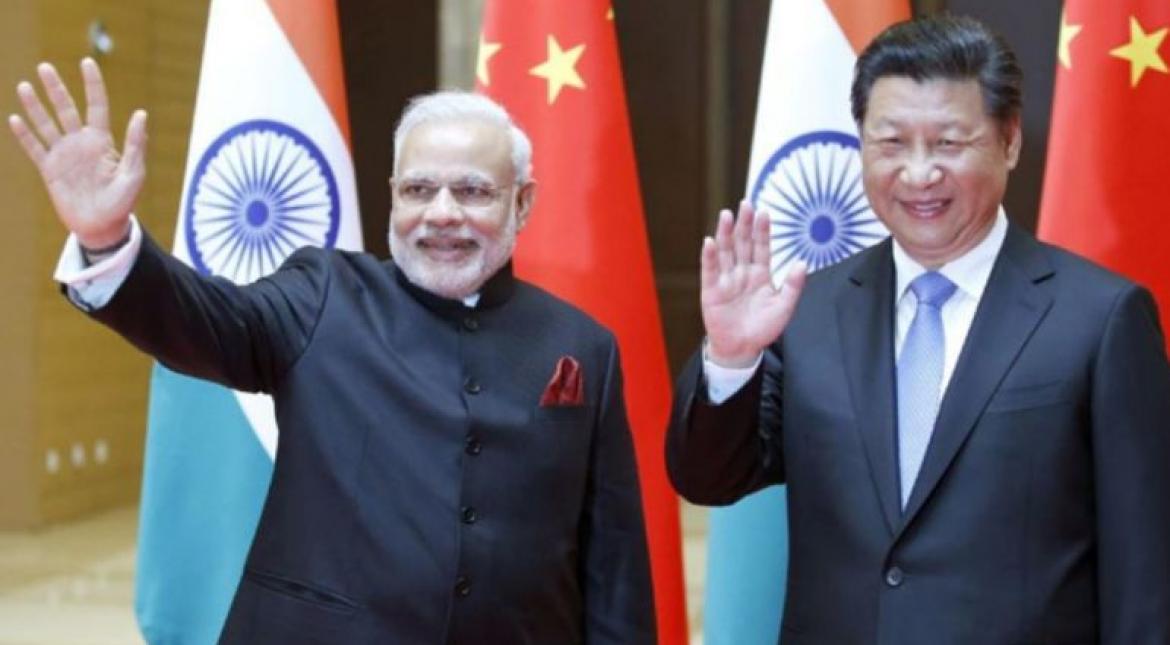Reading Time: 4 minutes
The informal Wuhan summit has helped to morph Doklam tension into a softer China and its yearn for India’s support for its role in the Asia Pacific region. A progressive economic engagement is the outcome of the summit. Given the fact both countries are the twin propellers for global growth, inter-dependence between India and China is imperative. A report, for Different Truths.
A perpetual border settlement between India and China is untenable. Then, why not use economic engagement to soothe the relation. Against the backdrop of US trade war against China, Prime Minister Modi’s reciprocation to Beijing’s urge for an amelioration of ties is a timely step for his Act East policy, which has been shadowed by China’s BRI (Belt and Road initiative). India has declined to be party to BRI.
The informal Wuhan summit has helped to morph Doklam tension into a softer China and its yearn for India’s support for its role in the Asia Pacific region. A progressive economic engagement is the outcome of the summit. Given the fact both countries are the twin propellers for global growth, inter-dependence between India and China is imperative. China needs India for a bigger market and India needs China for enlarging foreign investment.
China fears a big loss of its export market after USA’s double whammy to its exports – by raising tariffs on imports from China and culling China’s exports to the world by re-joining TPP. China is skeptical about the success of its BRI, whose main aim is to step up exports utilizing the idle capacity if trade war intensifies.
China is an export-based economy. Trade accounts for 37 percent of its GDP. India is emerging as an important global market, driven by high GDP growth and a big pool of middle class and non-aging population. India can be a potential offset for China’s loss of exports in the longer run.
Although the Doklam stand-off dumped India-China relation in a damp squib, the relation witnessed chances for resurrection after 9th BRICS summit in China in September 2017. There was a series diplomatic exchanges between India and China. On December 11, Chinese Foreign Minister Wang Yi visited India. This was followed by the visits of Yang Jiechi, the State Councilor and Special Representative of China on the Boundary Questions. Reciprocating to the Chinese desire for better relation, new Foreign Secretary Vijay Gokhle – who was the mastermind to put the lid on the Doklam issue as Ambassador to China – visited Beijing for talks with Yang Jiechi. On April 13, India’s National Security Adviser Ajit Dovel visited Shanghai. On April 21, Foreign Minister Sushma Swaraj visited China to take part in the ministerial meeting of the Shanghai Cooperation Organisation (SCO). Around that time, Defence Minister Nirmala Sitharaman also attended the SCO defence ministers’ meeting.
These frequent diplomatic exchanges culminated in the Modi-Xi Jinping informal summit, according to Global Times, a leading national daily in China. Such intense series of high-level diplomatic exchanges rarely happened earlier, signaling the aspiration of both countries for improving the relation, the daily said. “Friction can be handled with deft diplomacy. With the return of frequent and attentive diplomatic exchanges, the two sides can quickly work out their issues,” it added.
What has driven China to make a somersault in its anti-India protest? Is it a fear from its own people, who are doing business in India or to find a major alternative market after the trade war was intensified by the USA, China’s biggest export destination?
Modi was not averse to economic engagement with China. His relation with China was established well before he became Prime Minister. As Chief Minister of Gujarat, he visited China four times. Unlike his predecessor, Modi tried to woo Chinese investment, despite the security concerns. Instead of resorting to a trade war to cut trade deficit, the Modi administration took viable economic steps by enlarging Chinese investment.
Chinese companies benefitted from this improved economic engagement. Starting 2015, Chinese investment in India surged eight times and became the eighth-biggest foreign investor in India from the 26th position. Six top brand Chinese smartphone makers, viz, Xiaomi, Oppo, Oneplus, Gionee, Vivo, Huawei, have set up their manufacturing operations in India. During 2016, Chinese companies proposed the US $ 2.3 billion worth of investment in the country.
As a result, India emerged as an engine for the global presence of Chinese mobile manufacturing companies. India accounts for 60 to 70 of the global sales of these Chinese companies. For Xiaomi’s smartphones, India accounts for 67 percent of its global sales. For Vivo, it is 73 percent and Oppo 48 percent; for Gionee it is one-fourth.
India’s potency sparked after Chinas lost its vigour as a low-cost workshop of the world. According to FDI Intelligence, an outfit of Financial Times, UK, India replaced China as a recipient of FDI in greenfield projects in 2015. FDI in Greenfield in India increased by 37 percent in 2015 and surged further by 18 percent in 2016, bringing cumulative growth by over 50 percent.
Interest for economic engagement between the two countries accelerated further after the successful launching of AIIB (Asia Infrastructure Investment Bank) in 2014. It was China’s initiative, which led to the setting up of an alternative Asian mega financial institution on the lines of ADB. China is the biggest stakeholder in AIIB and India is the second biggest. It entrusts more power to India in the disbursement of loans than ADB.
In summing up, Modi’s strategy for economic partnership with China, despite the political differences, is a timely attempt to benefit from the Chinese economic power.
Subrata Majumder
©IPA Service
Photo from the Internet















